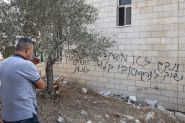- Home
- Arab World
- Hamas: A Beheaded Organization Still Standing

©Photo par OMAR AL-QATTAA / AFP
Is the terrorist group Hamas still capable of inflicting damage on the state of Israel? An investigation by American outlet NBC suggests that it is.
Despite being severely weakened after two years of open war, the Islamist movement is believed to still have around 20,000 fighters, hundreds of rockets – including some with long-range capabilities – and a significant tunnel network that remains intact despite Israeli bombings. The group continues to maintain a political presence and is seeking to recruit new members.
NBC reports that despite months of Israeli airstrikes and ground operations, Hamas has not been wiped out in Gaza. Its infrastructure has been heavily damaged, many fighters have been killed, and its administrative control has collapsed in several areas. Yet in other parts of the Gaza Strip, particularly in the north and around Khan Younis, the movement is beginning to re-emerge. Its presence has reappeared in the streets, organizing patrols and restoring a degree of political presence.
The French government spokesperson said on Wednesday that Hamas is “regaining control of Gaza,” calling for the “urgent” implementation of security and governance measures across the territory. US Vice President JD Vance added from Jerusalem that disarming Hamas in Gaza and rebuilding the Palestinian territory will be “a very difficult task.”
Signs of Resurgence
Witnesses cited by NBC, including Giora Eiland, the former head of Israel’s National Security Council and former chief of planning for the Israel Defense Forces, report that armed Hamas members are moving through areas previously declared “cleared” by the Israeli army. Flags of the movement have reappeared, and local cells have resumed police or security functions. This demonstrates the group’s resilience and its ability to blend into the population, reorganize into smaller units and exploit the gaps left by the partial withdrawal of Israeli troops.
The Shadow of an Urban Guerrilla
Shalom Ben Hanan, a researcher at the International Institute for Counter-Terrorism at Reichman University in Israel, explains that Hamas has lost much of its conventional military capacity, including centralized command, rocket production and a coordinated tunnel network, but has reinvented itself as a guerrilla force. Its fighters now operate through ambushes, planting improvised explosive devices and carrying out sporadic attacks before dispersing. This approach mirrors tactics used by other insurgent movements that have survived intensive elimination campaigns.
An Incomplete Israeli Victory
For Israel, the mission to eradicate Hamas remains far from accomplished. Experts interviewed by NBC say that a total victory is nearly impossible without a long-term reoccupation of the Gaza Strip, which Israel is currently seeking to avoid. Military operations have reduced the threat but have not eliminated it. The human and political cost of a prolonged occupation makes this option unrealistic, leaving the conditions ripe for a gradual resurgence of Hamas.
The Political and Symbolic Dimension
Politically, NBC notes that Hamas continues to capitalize on the sense of resistance among Palestinians. Even in a weakened state, it remains a symbol of defiance against Israel and foreign powers. Some civilians, despite their frustration with the war, still view Hamas as a defender of the Palestinian cause, giving it a political influence that neither the Palestinian Authority nor any other entity has managed to replace.
Read more





Comments